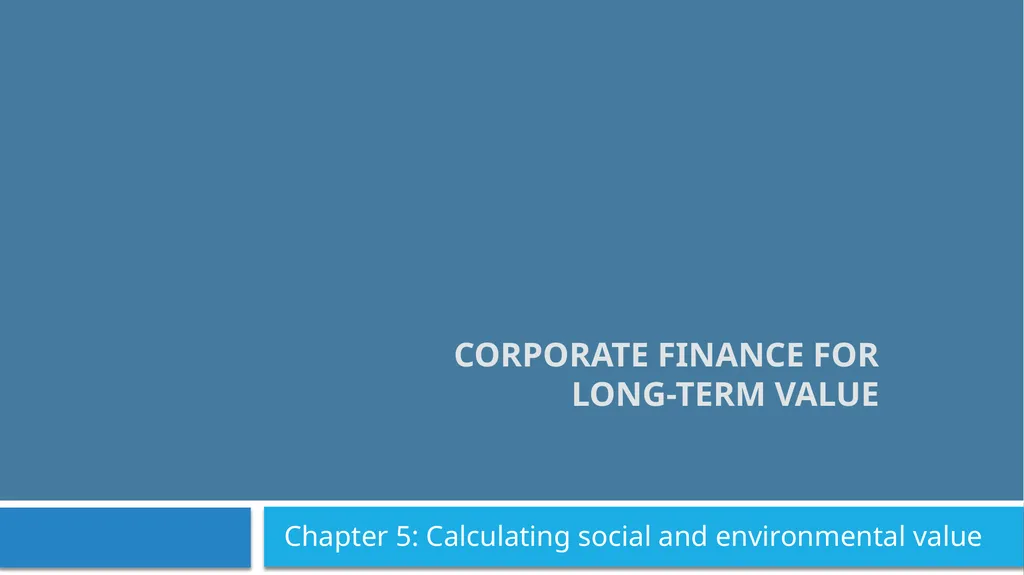Corporate Finance for Long-Term Value Chapter 5:
Author : tatyana-admore | Published Date : 2025-06-23
Description: Corporate Finance for LongTerm Value Chapter 5 Calculating social and environmental value Chapter 5 Calculating social and environmental value Part 2 Discount rates and valuation methods The BIG Picture 3 How to make social and
Presentation Embed Code
Download Presentation
Download
Presentation The PPT/PDF document
"Corporate Finance for Long-Term Value Chapter 5:" is the property of its rightful owner.
Permission is granted to download and print the materials on this website for personal, non-commercial use only,
and to display it on your personal computer provided you do not modify the materials and that you retain all
copyright notices contained in the materials. By downloading content from our website, you accept the terms of
this agreement.
Transcript:Corporate Finance for Long-Term Value Chapter 5::
Corporate Finance for Long-Term Value Chapter 5: Calculating social and environmental value Chapter 5: Calculating social and environmental value Part 2: Discount rates and valuation methods The BIG Picture 3 How to make social and environmental value comparable to financial value? Solution Select material social (S) and environmental (E) factors Express them in their own units (Q) Monetise the S and E factors with shadow prices (SP) Use the standard DCF model to discount the value flows (Q * SP) The resulting SV and EV is comparable to FV Basics of value calculation 4 How to measure SV and EV 5 Example 6 The cash flows of a steel project Use the shadow carbon price of $224 per 1 ton of CO2 to calculate EVF Example 7 Then calculate FV and EV using the financial discount rate of 6% and social discount rate of 2% respectively Conclusion: the integrated value is positive, so the project is worth doing! Material, social and environmental factors 8 The value calculation for SV and EV can be done in three steps: Materiality assessment - determine important SV and EV factors; Quantification - express these factors in their own units Q; and Monetisation - express these factors in money with shadow prices SP Materiality assessment 9 Materiality assessments aim to determine which S and E factors are important to consider Material topics are those that reflect the company’s most significant impacts (positive or negative) on people and environment Materiality depends on the specific situation and can differ per industry and country A core set of factors which should always be included: Greenhouse gas emissions - including carbon emissions Labour practices - including discrimination and inclusion Business ethics - including corruption and fraud Material social and environmental factors 10 Social factors Labour practices (e.g. training, discrimination) Combatting poverty (e.g. underpayment in value chain) Interaction with communities (e.g. regional economic activity, health & safety, business ethics) Environmental factors Pollution (e.g. carbon emissions, water pollution) Use of scarce resources (e.g. scarce materials, land, water) Restoration of air, land or water (e.g. land restoration, water purification) Quantifying social and environmental impact 11 Expressing E issues in own units: GHG emissions: expressed in tonnes of CO2 Some issues are easily quantifiable (carbon, nitrogen or freshwater use) whereas others are more difficult to express in a single metric (biodiversity) Expressing S issues in own units: For example, quality of life years














